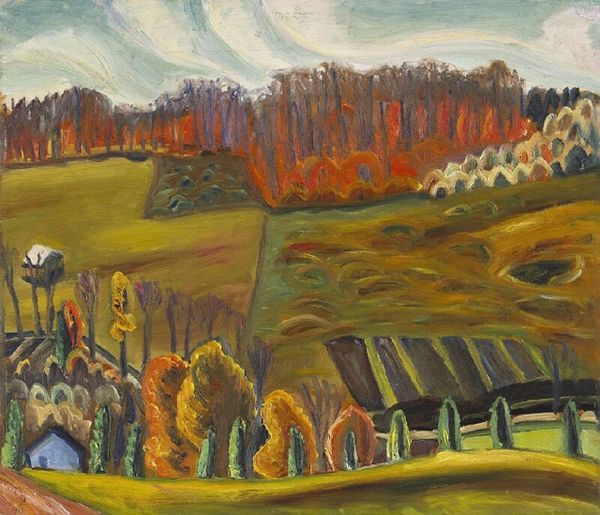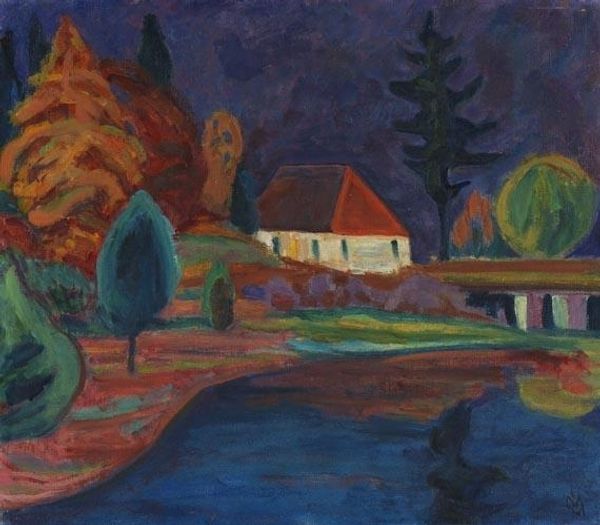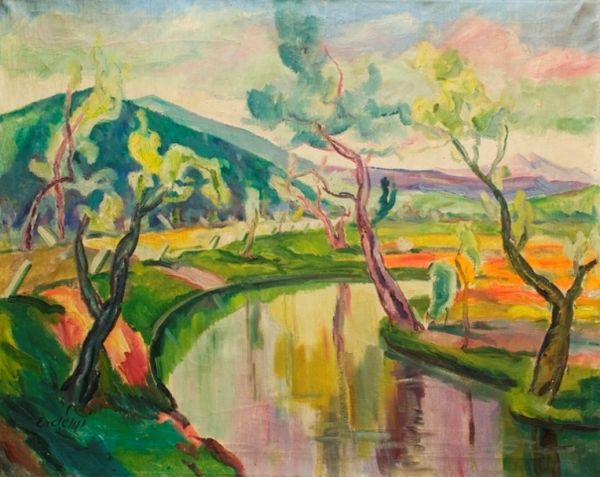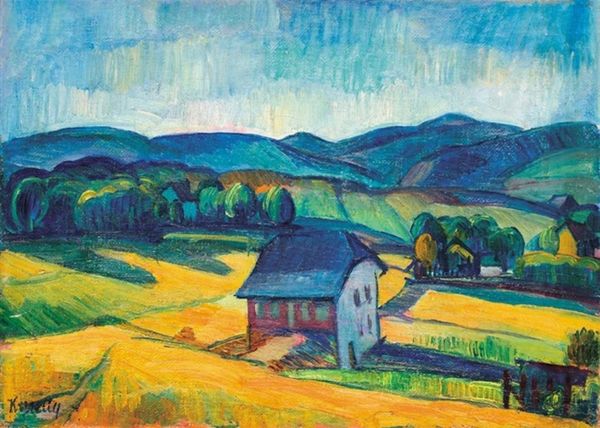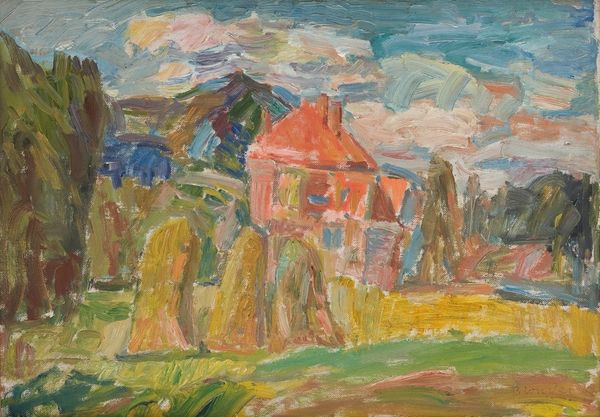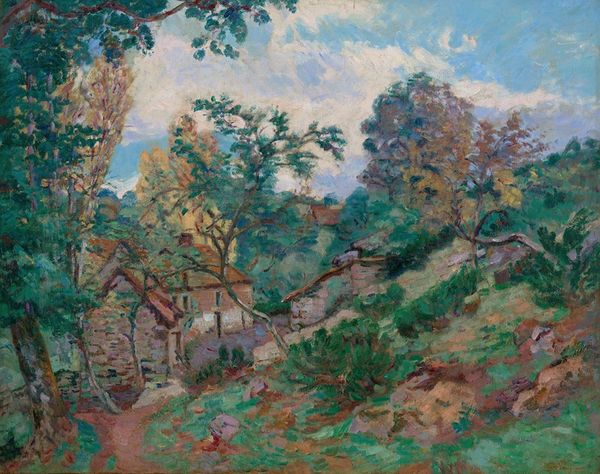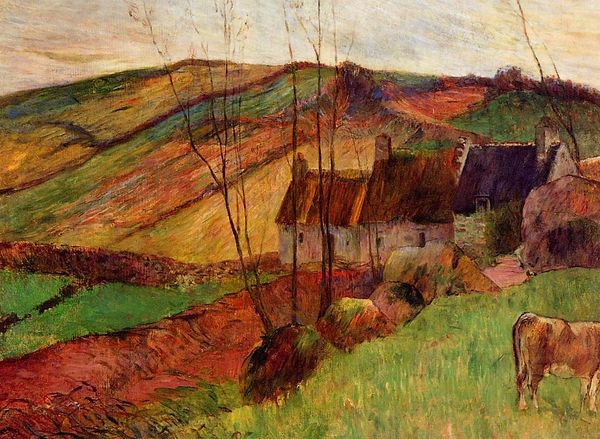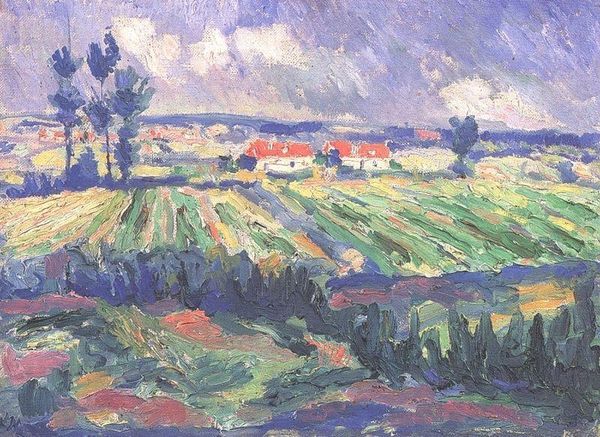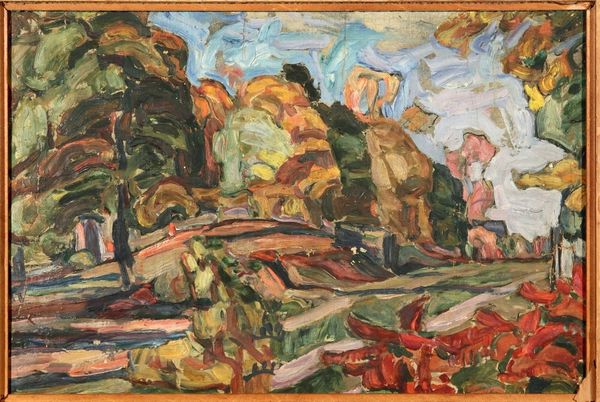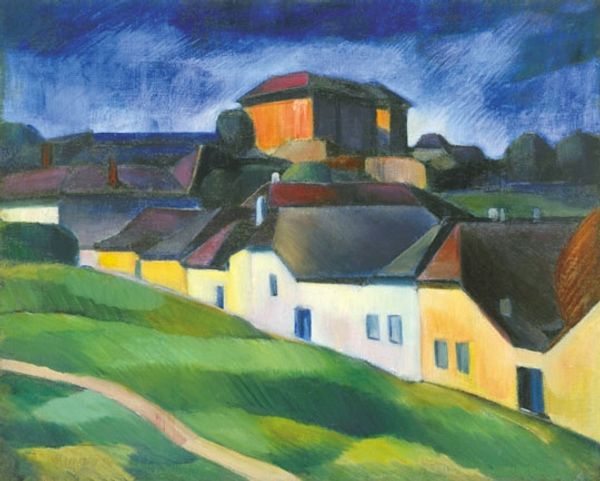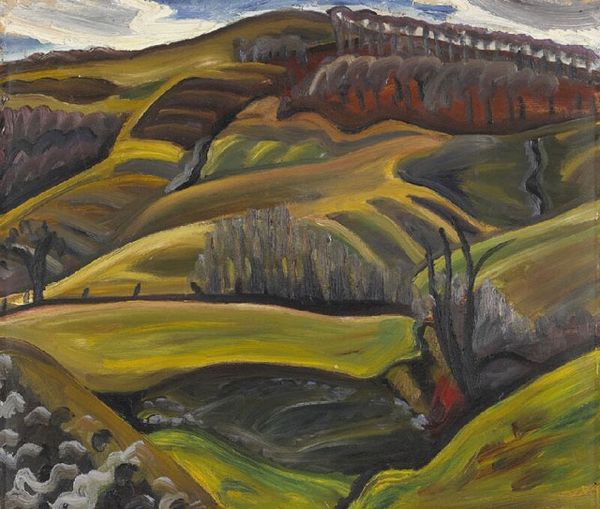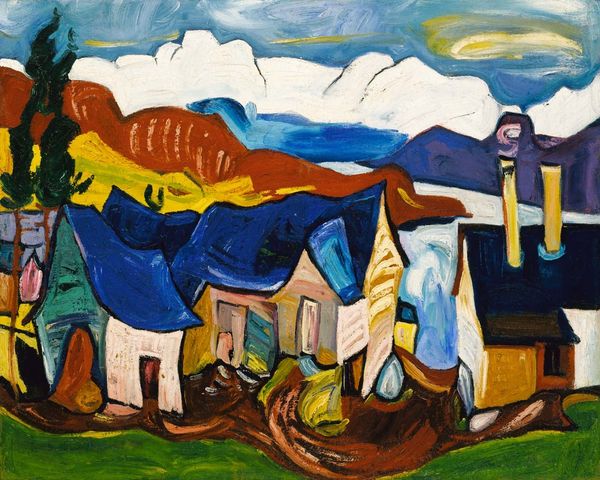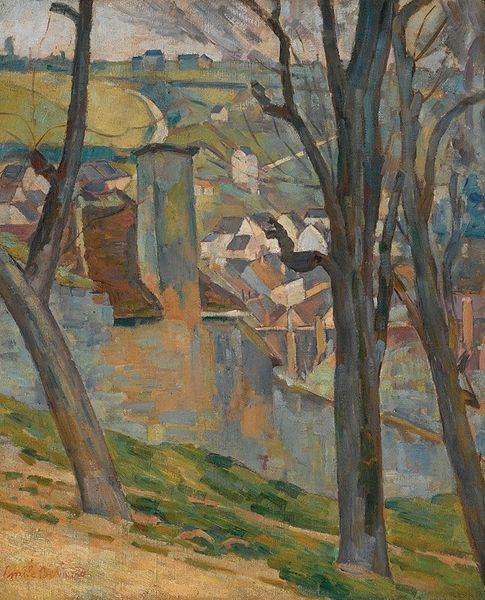
Copyright: Pierre Daura,Fair Use
Curator: Oh, that sings! It makes me want to breathe in deep and crunch through some fallen leaves. Editor: Indeed, this vibrant oil on canvas is "Fall at the McCorkle's Barn" by Pierre Daura, completed in 1942. The landscape, awash in the hues of autumn, presents a rustic scene. Curator: Rustic, but restless. It feels less like a still moment and more like a memory being vigorously shaken. The way he layers the paint, all those staccato brushstrokes—the yellows, oranges, even that jarring pink—they don't so much blend as vibrate against each other. And those sheep scattered across the lower section seem a bit frantic to me. Editor: You astutely notice Daura's Expressionist brushwork. He wasn't merely depicting a barn and surrounding fields; his plein-air works served to explore deeper connections to the socio-political concerns arising from World War II, when his family hosted French refugee children fleeing from conflict. So in effect, while Fauvist tendencies can be clearly detected in his aesthetic technique, it is quite possible Daura's anxieties at this time spilled into these outwardly peaceful and serene renderings. Curator: That resonates! So maybe those skittish sheep aren't just random pasture dwellers, but echoes of that wartime upheaval—a gentle trembling interrupting the postcard-perfect view. And this idea may even reflect the role Daura plays as a transient: although born in France, Daura later became an American citizen and thus straddled two cultures. I think in turn, "Fall at the McCorkle's Barn" can thus be perceived as a nod to Daura's attempt to "fit in," per se. Editor: That cultural intersection certainly informed his artistic perspective, enabling a unique blending of European modernism with the American landscape, so in some sense I'd argue the 'straddling' between two world-views allowed for greater exploration and insights than potentially what could've been achieved through single immersion. Daura’s position also certainly raises interesting questions around identity and representation in a world increasingly disrupted by war and displacement. Curator: A lot of quiet questioning beneath all that chromatic exuberance. So much more than meets the eye upon a casual viewing. Editor: Exactly. The artwork certainly invites you in—and then whispers all sorts of complicated stories.
Comments
No comments
Be the first to comment and join the conversation on the ultimate creative platform.
